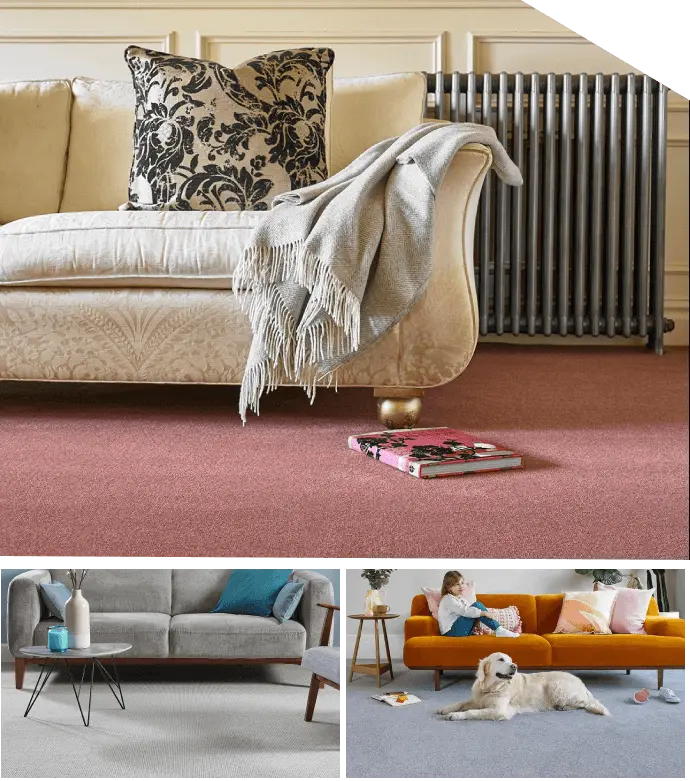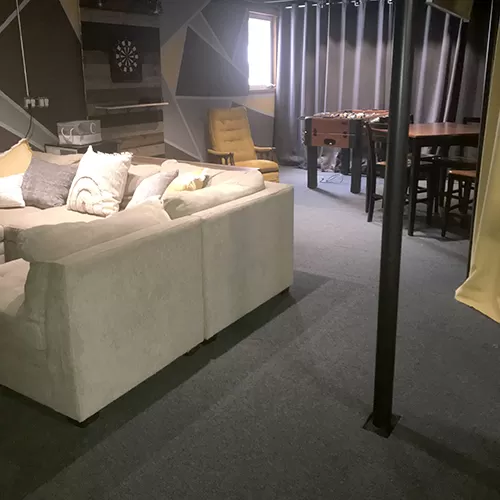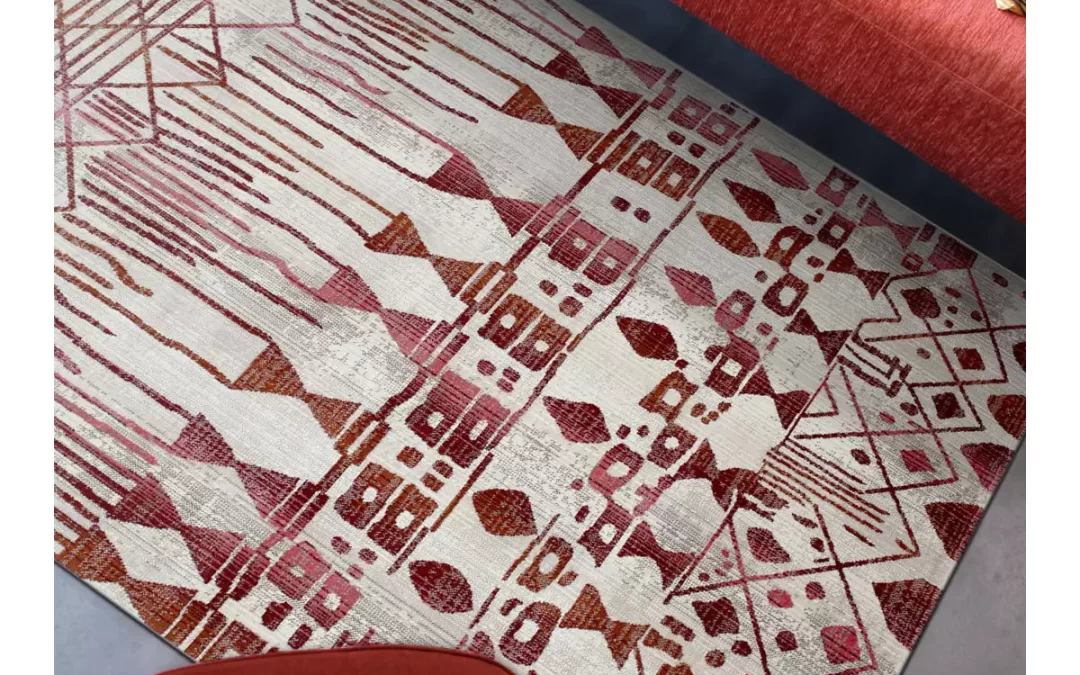Carpets have long held a significant place in human history, serving as both functional floor coverings and expressions of cultural identity and artistic creativity. Defined as thick woven fabric typically used to cover floors, carpets play a crucial role in interior design, providing warmth, comfort, and aesthetic appeal to living spaces.
The significance of carpets spans across various cultures and civilizations, where they have been woven with intricate designs, vibrant colors, and symbolic motifs, often reflecting the unique heritage and traditions of their makers. From the ornate Persian rugs of the Middle East to the geometric patterns of Native American weavings, carpets carry stories of craftsmanship and cultural identity.
There exists a diverse array of carpet types, each distinguished by its materials, weaving techniques, and cultural origins. Traditional hand-knotted carpets, such as the Persian and Turkish rugs, are crafted painstakingly by skilled artisans, embodying centuries-old traditions and techniques. Machine-made carpets, on the other hand, offer affordability and mass-production capabilities, catering to a wider consumer market.
Other types include the plush comfort of tufted carpets, the durability of woven carpets, and the eco-friendly appeal of natural fiber carpets like jute and sisal. Each type caters to different preferences in terms of aesthetics, functionality, and sustainability, contributing to the rich tapestry of carpet culture worldwide.
Room Carpets: Elevate Your Interior with Plush Comfort and Style
Definition and Purpose:
Room carpets, also known as area rugs or floor coverings, are textile floor coverings specifically designed for use within rooms. Their primary purpose is to enhance the comfort, aesthetics, and functionality of interior spaces. These carpets provide insulation, cushioning underfoot, and can help define different functional areas within a room.
Importance of Selecting the Right Carpet for kids Room:
Choosing the appropriate room carpet for rooms is crucial as it directly influences the overall ambiance and usability of the space. A well-selected carpet can tie together various design elements, elevate the visual appeal, and contribute to a cozy atmosphere. Conversely, an unsuitable carpet choice may clash with the room’s décor, pose maintenance challenges, or compromise comfort and durability.
Factors to Consider When Choosing Room Carpet:
- Size: The dimensions of the room carpet should be proportional to the room size, providing adequate coverage without overwhelming the space or obstructing traffic flow.
- Material: Different carpet materials offer varying levels of durability, comfort, and maintenance requirements. Common options include wool, nylon, polyester, and natural fibers like jute or sisal.
- Style and Design: The style and design of the carpet should complement the room’s décor, whether it’s a bold statement piece or a subtle accent. Consider factors such as color, pattern, and texture to achieve harmony with existing furnishings and aesthetic preferences.
Revitalize Your Living Space Exquisite Living Room Carpet Selections

Living room carpets are essential elements of interior design specifically tailored for the primary social space within a home. They are large area rugs or carpeting solutions designed to enhance the comfort, style, and functionality of the living room environment.
Importance of the Living Room Carpet in Interior Design:
The living room carpet holds significant importance in interior design as it serves as the focal point of the room, anchoring the seating area and tying together various design elements. It adds warmth, texture, and visual interest to the space while also providing comfort underfoot. Additionally, the living room carpet helps define the overall ambiance and style of the room, contributing to its aesthetic appeal and creating a welcoming atmosphere for both residents and guests.
Popular Styles for Living Room Carpets:
Persian Carpets:
Renowned for their intricate patterns, rich colors, and superior craftsmanship, Persian carpets bring a touch of traditional elegance to living rooms. These hand-knotted rugs often feature motifs inspired by nature, history, or cultural symbolism, adding a timeless charm to the space.
Contemporary Designs:
Modern living rooms often feature carpets with sleek, minimalist designs or bold geometric patterns. Contemporary carpets offer versatility in style, allowing homeowners to express their individuality and adapt to evolving interior trends.
Playfully Practical Choosing the Perfect Carpet for Kids Room

Carpets play a crucial role in the kids room by providing a comfortable and safe environment for play, learning, and relaxation. Unlike hard flooring surfaces, carpets offer cushioning and warmth, making them ideal for activities such as crawling, sitting, and playing on the floor. Additionally, carpets can enhance the overall ambiance of the room, adding color, texture, and a sense of coziness that contributes to a child-friendly atmosphere.
Features of Kid-Friendly Carpets:
- Durability: Kid-friendly carpets are typically constructed from durable materials such as nylon or polyester to withstand the wear and tear of active play and foot traffic.
- Stain Resistance: Room Carpets with stain-resistant properties are essential for kids’ rooms to withstand spills, accidents, and messes. Stain-resistant coatings or materials make cleaning up spills easier and help maintain the carpet’s appearance over time.
- Softness and Comfort: Soft and plush carpets provide a comfortable surface for children to sit, play, and relax. Carpets with a higher pile or cushioning layers offer enhanced comfort underfoot, reducing fatigue during playtime activities.
Safety Considerations:
Safety is paramount in kids’ rooms, so it’s essential to choose carpets that meet specific safety standards and considerations:
– Non-Toxic Materials:
Opt for carpets made from non-toxic materials to ensure they are safe for children, especially those prone to allergies or sensitivities.
Timeless Charm Enhancing Your Living Room Persian Carpet
Living room Persian carpet are intricately woven textile floor coverings originating from Iran (formerly Persia) and renowned for their exquisite craftsmanship, elaborate designs, and high-quality materials. These carpets typically feature intricate floral motifs, geometric patterns, or pictorial scenes, meticulously hand-knotted by skilled artisans. Persian carpets are characterized by their dense pile, vibrant colors achieved through natural dyes, and durable construction, making them prized possessions and works of art.
Historical Significance of Persian Carpets:
The living room Persian carpet holds profound historical significance, dating back over 2,500 years. Throughout history, Persian carpets served as symbols of wealth, prestige, and cultural identity, adorning the palaces, mosques, and homes of royalty and nobility. They were prized possessions traded along the ancient Silk Road, showcasing Persia’s rich artistic heritage and craftsmanship to the world.
Role of Persian Carpets in Living Room Décor:
In contemporary living room décor, Persian carpets serve as luxurious focal points, adding elegance, warmth, and timeless charm to the space. These carpets can anchor furniture arrangements, define seating areas, and inject personality into the room with their intricate designs and rich colors. Whether used as statement pieces in minimalist interiors or as traditional accents in eclectic settings, Persian carpets bring a sense of sophistication and cultural richness to the living room décor, creating inviting and visually captivating spaces for relaxation and social gatherings.
Emirati Elegance Living Room Carpets in Dubai and the UAE

The carpet industry in Dubai and the United Arab Emirates (UAE) is a thriving sector deeply rooted in the region’s cultural heritage and economic development. Dubai, in particular, serves as a hub for carpet trade and craftsmanship, attracting artisans, traders, and enthusiasts from around the world. The UAE’s strategic location, coupled with its robust infrastructure and business-friendly policies, has positioned it as a leading player in the global carpet market.
Popular Trends in Living Room Carpet Dubai and UAE:
In Dubai and the UAE, living room carpet dubai often reflect a blend of traditional and contemporary styles. While traditional Persian and Oriental designs remain popular, there is a growing demand for modern, minimalist carpets featuring sleek patterns and neutral color palettes. Additionally, eco-friendly and sustainable carpet options are gaining traction in line with the region’s focus on sustainability and environmental consciousness.
Cultural Influences on Carpet Designs:
Cultural influences heavily shape carpet designs in Dubai and the UAE, with motifs and patterns inspired by the region’s rich heritage and diverse cultural tapestry. Traditional Arabic geometric patterns, floral motifs, and intricate Islamic art elements often adorn carpets, reflecting the region’s Islamic heritage and artistic traditions. Moreover, carpets may incorporate motifs inspired by desert landscapes, camel motifs, or symbols of prosperity and good fortune, reflecting the cultural values and aspirations of the local population.
From the Ground Up Exploring Room Carpet Flooring Options
Carpet flooring refers to the use of textile-based floor coverings to enhance the aesthetics, comfort, and functionality of interior spaces such as rooms. Unlike hard surface flooring options like wood or tile, carpet flooring offers a softer and warmer underfoot feel, providing insulation and sound absorption benefits.
Different Types of Carpet Flooring Materials:
Carpet flooring materials vary in composition, each offering unique characteristics and benefits. Common types include:
- Nylon: Known for its durability and resilience, nylon carpets are resistant to stains and abrasion.
- Polyester: Polyester carpets offer excellent stain resistance and color retention, making them ideal for high-traffic areas.
- Wool: Renowned for its luxurious feel and natural durability, wool carpets provide warmth and comfort.
- Olefin (Polypropylene): Olefin carpets are highly resistant to moisture, mold, and mildew, making them suitable for basements and humid environments.
Installation and Maintenance Tips for Room Carpet Flooring:
- Proper installation: Ensure professional installation to prevent wrinkles, bulges, and uneven seams.
- Regular vacuuming: Vacuum carpets weekly to remove dirt, dust, and debris.
- Professional cleaning: Schedule periodic professional carpet cleaning to maintain freshness and prolong lifespan.
By understanding the various types, pros and cons, and maintenance tips for carpet flooring in rooms, homeowners can make informed decisions to create comfortable and visually appealing living spaces.
Conclusion
Throughout this discussion, we’ve explored the significance of carpets in interior design, focusing on their diverse applications in different rooms. We’ve delved into various types of room carpet, including Persian, contemporary, and Oriental designs, each offering unique characteristics and cultural influences. Additionally, we’ve discussed the importance of considering factors such as size, material, and style when selecting carpets for specific rooms, highlighting their role in enhancing comfort, aesthetics, and functionality.
Selecting the right carpet for each room carpet is essential for creating inviting and functional living spaces. The choice of carpet influences the ambiance, comfort, and visual appeal of the room, making it crucial to consider factors such as durability, stain resistance, and design coherence with existing décor. By choosing appropriate carpets, homeowners can create cohesive and harmonious environments that cater to their lifestyle needs and preferences.
Looking ahead, future trends in room carpet and flooring are likely to focus on sustainability, innovation, and customization. With an increasing emphasis on eco-friendly materials and practices, we may see a rise in demand for carpets made from recycled fibers or natural materials. Additionally, advancements in technology may lead to the development of smart carpets with integrated features such as temperature regulation or interactive capabilities. Moreover, as design preferences evolve, we may witness a continuation of the trend toward minimalist, versatile carpets that offer both style and functionality in modern living spaces.

